Dental restoration is a critical component of modern dentistry, encompassing a range of procedures designed to repair and restore the function, structure, and appearance of teeth that have been damaged or decayed. Whether due to trauma, cavities, wear and tear, or congenital issues, teeth often require intervention to ensure long-term oral health and aesthetic appeal.
This article provides a thorough examination of dental restoration, including its various techniques, materials, and advancements in the field. We will explore the different types of dental restoration methods, the step-by-step procedures involved, the technologies and materials used, and the benefits of restoring damaged teeth.
1. Introduction to Dental Restoration
1.1 What is Dental Restoration?
Dental restoration refers to the various techniques used by dentists to repair and replace teeth that have been damaged, decayed, or missing. The goal of dental restoration is not only to restore the tooth’s function but also to enhance its aesthetic appearance. Whether a tooth is chipped, cracked, decayed, or missing, restorative dentistry offers solutions to bring back the tooth’s natural look and function.
Dental restorations can be classified into two major categories:
- Direct restorations: Involves materials that are placed directly into the cavity or damaged area of the tooth.
- Indirect restorations: Involves creating a custom restoration outside of the mouth, which is then placed onto or in the damaged tooth.
1.2 Why is Dental Restoration Important?
Dental restoration plays a vital role in overall oral health. It helps restore the function of damaged teeth, enabling the patient to chew properly, speak clearly, and maintain an aesthetically pleasing smile. In addition, dental restorations can prevent further damage to the teeth, reduce the risk of infection, and promote healthy gums.
Restoring damaged teeth is also essential for:
- Preventing the spread of tooth decay or cavities to other teeth.
- Improving the bite and jaw alignment.
- Enhancing confidence and self-esteem through better aesthetics.
- Ensuring long-term durability of the teeth, especially in cases of heavy wear or trauma.
1.3 Overview of the Dental Restoration Process
The dental restoration process generally begins with a thorough examination and diagnostic assessment by the dentist. This may include X-rays, photographs, and a physical exam to determine the extent of the damage. Once the problem is identified, the dentist will discuss treatment options with the patient, explaining the pros and cons of each approach.
Depending on the type of restoration needed, the process may involve one or more visits. For example, direct restorations like fillings can often be completed in a single visit, while indirect restorations, such as crowns or bridges, require multiple appointments for tooth preparation, impression-taking, and the final placement of the restoration.
2. Types of Dental Restorations
2.1 Fillings
Fillings are the most common type of direct dental restoration. They are used to treat cavities caused by tooth decay. The procedure involves cleaning out the decayed portion of the tooth and filling the cavity with a restorative material. Fillings are used to restore the tooth’s function and prevent further decay.
2.1.1 Types of Fillings
- Amalgam Fillings: A traditional silver-colored filling made from a mixture of metals, including silver, mercury, and tin. While durable and cost-effective, amalgam fillings are less aesthetically pleasing due to their color.
- Composite Resin Fillings: These are tooth-colored fillings made from a blend of plastic resins and fine glass particles. Composite fillings are popular for visible teeth because they match the color of natural teeth.
- Ceramic Fillings: Made from porcelain, ceramic fillings are more durable than composite resin fillings and provide a natural appearance. They are often used in the back teeth, where there is more pressure from chewing.
- Glass Ionomer Fillings: Made from a mixture of glass and acrylic, glass ionomer fillings release fluoride, helping to prevent further decay. They are not as durable as ceramic or amalgam fillings but are used for fillings in less visible areas.
2.1.2 Advantages of Fillings
- Quick and relatively painless procedure.
- Preserves the tooth structure by removing only the decayed portion.
- Various materials are available to match the color of the teeth (composite and ceramic).
- Restores the tooth’s function, allowing for normal chewing and speaking.
2.2 Crowns
A dental crown is a cap that completely covers a damaged tooth. Crowns are typically used when a tooth is severely decayed, fractured, or weakened after a root canal. Crowns restore the tooth’s shape, size, strength, and appearance.
2.2.1 Types of Crowns
- Metal Crowns: Made from gold or other alloys, these crowns are highly durable and resistant to wear and tear but are not aesthetically pleasing for visible teeth.
- Porcelain-Fused-to-Metal Crowns: These crowns combine the durability of metal with the aesthetic appearance of porcelain. They are commonly used for teeth that are visible but need added strength.
- All-Ceramic or All-Porcelain Crowns: These crowns offer the best aesthetic results as they closely resemble natural tooth enamel. They are ideal for visible teeth, but they may not be as durable as metal crowns in terms of wear.
- Zirconia Crowns: Made from zirconium oxide, zirconia crowns are known for their strength, durability, and natural appearance. They are often used in both the front and back teeth.
2.2.2 Advantages of Crowns
- Restores the function and appearance of heavily damaged or decayed teeth.
- Offers excellent durability and strength, especially with metal or zirconia crowns.
- Can protect a tooth after a root canal treatment or a large filling.
- Custom-made to match the color and shape of the natural teeth.
2.3 Bridges
A dental bridge is used to replace one or more missing teeth. The bridge is anchored to the neighboring teeth (abutment teeth) or dental implants. It consists of one or more artificial teeth (pontics) that fill the gap left by missing teeth.
2.3.1 Types of Bridges
- Traditional Bridges: These are the most common type and involve creating crowns for the abutment teeth, with a pontic placed in between to replace the missing tooth.
- Cantilever Bridges: Used when there is only one adjacent tooth to support the bridge, the cantilever bridge is anchored to one tooth.
- Maryland Bridges: These bridges use a metal or porcelain framework that is bonded to the back of the neighboring teeth, making them less invasive than traditional bridges.
- Implant-Supported Bridges: These bridges are supported by dental implants rather than natural teeth, providing a more permanent solution for missing teeth.
2.3.2 Advantages of Bridges
- Restore the appearance and function of missing teeth.
- Prevent the remaining teeth from shifting into the gap.
- Help maintain the structure of the face and improve the bite.
- Can be anchored by crowns, reducing the need for extractions of neighboring healthy teeth.
2.4 Dentures
Dentures are removable replacements for missing teeth and surrounding tissues. They are typically made of acrylic, sometimes combined with metal, and are custom-designed to fit snugly in the mouth.
2.4.1 Types of Dentures
- Complete Dentures: These are used when all the teeth in a dental arch are missing. Complete dentures are designed to restore both the function and appearance of the missing teeth.
- Partial Dentures: These are used when some natural teeth remain. Partial dentures fill in the gaps left by missing teeth and are attached to the remaining natural teeth using clasps or precision attachments.
- Implant-Supported Dentures: These dentures are supported by dental implants and provide a more stable fit than traditional removable dentures.
2.4.2 Advantages of Dentures
- Provide a solution for those who have lost all or most of their teeth.
- Restore the ability to chew, speak, and smile naturally.
- Can improve facial aesthetics and prevent the sagging of facial muscles.
- Removable for cleaning and maintenance.

2.5 Inlays and Onlays
Inlays and onlays are indirect restorations made from materials such as porcelain, composite resin, or gold. They are used to repair teeth that have mild to moderate decay but are not damaged enough to require a full crown.
- Inlays are used for damage within the cusps of a tooth, filling cavities that do not affect the tooth’s cusps.
- Onlays are larger than inlays and cover one or more cusps of the tooth.
2.5.1 Advantages of Inlays and Onlays
- Provide a natural, aesthetically pleasing appearance.
- Preserve more of the natural tooth structure compared to crowns.
- Highly durable, especially when made from porcelain or gold.
- More resistant to wear and staining than regular fillings.
2.6 Root Canals
A root canal is a treatment used to repair and save a tooth that is severely decayed or infected. During a root canal, the infected or damaged pulp (the soft tissue inside the tooth) is removed, and the cavity is cleaned and sealed. After the root canal procedure, a crown is often placed on the tooth to restore its function.
2.6.1 Advantages of Root Canals
- Saves a tooth that would otherwise need to be extracted.
- Restores the tooth’s function and appearance.
- Prevents the spread of infection to surrounding tissues.
2.7 Dental Implants
Dental implants are a more permanent solution for replacing missing teeth. Implants are titanium posts that are surg
ically placed into the jawbone, acting as artificial tooth roots. After the implants integrate with the bone, crowns or bridges are placed on top.
2.7.1 Advantages of Dental Implants
- Long-lasting and durable.
- Preserve the integrity of the jawbone by preventing bone loss.
- Function and look like natural teeth.
- No need to alter neighboring teeth, as with bridges.
3. Materials Used in Dental Restorations
The choice of materials for dental restorations is crucial to their durability, aesthetic appeal, and overall success. Some of the most common materials used include:
- Porcelain: Offers a natural look and is commonly used for crowns, veneers, inlays, and onlays. Porcelain is durable and resistant to stains.
- Composite Resin: A tooth-colored material that is used for fillings, inlays, and bonding. Composite resin is versatile and can be molded to match the shape of the tooth.
- Gold: A highly durable and long-lasting material often used for crowns and inlays. While not aesthetically pleasing for visible teeth, gold is highly resistant to wear.
- Ceramics: Similar to porcelain, ceramics are strong and provide a natural appearance. Zirconia is a popular choice for crowns and bridges.
- Resilon: Used as a root canal filling material, Resilon is a thermoplastic material that offers good sealing properties and biocompatibility.
4. Advancements in Dental Restoration Technology
Recent advancements in dental restoration technologies have improved the precision, efficiency, and comfort of restorative procedures. Some of these advancements include:
- CAD/CAM Technology: Computer-Aided Design (CAD) and Computer-Aided Manufacturing (CAM) are used to design and create precise dental restorations. This technology allows for the creation of crowns, bridges, and other restorations in a single visit.
- Laser Dentistry: Lasers are used in restorative procedures to remove decay, reshape gums, and perform other tasks with minimal discomfort and quicker recovery times.
- 3D Printing: 3D printing is increasingly used to create custom dental restorations, such as crowns, bridges, dentures, and surgical guides, with high precision and speed.
5. Conclusion
Dental restoration is an essential aspect of modern dentistry that encompasses a wide range of treatments designed to restore the function, aesthetics, and health of damaged or missing teeth. Whether it’s a simple filling or a complex dental implant, restorative dentistry offers solutions that cater to individual needs and preferences.
The benefits of dental restoration are far-reaching, improving oral function, appearance, and overall well-being. With the advent of new materials and technologies, dental restorations are becoming more effective, durable, and aesthetically pleasing. If you’re dealing with damaged or missing teeth, consulting with a dentist about the available restoration options is the first step toward restoring your smile and oral health.

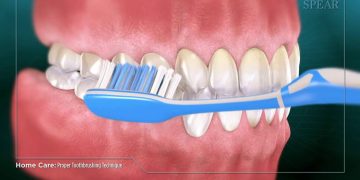
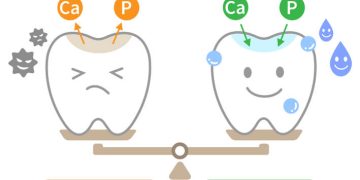
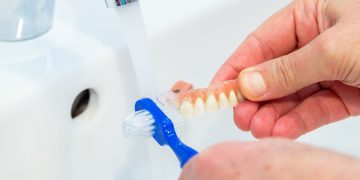




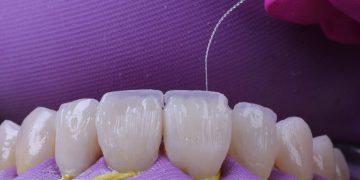
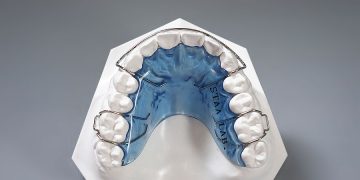

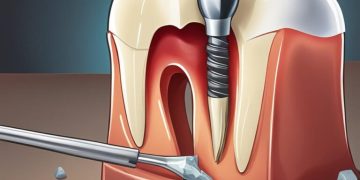













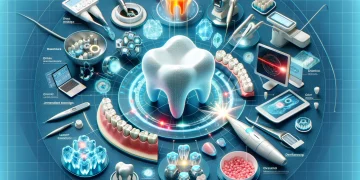



















Discussion about this post